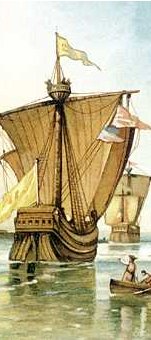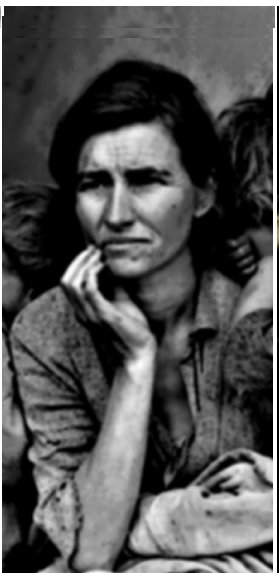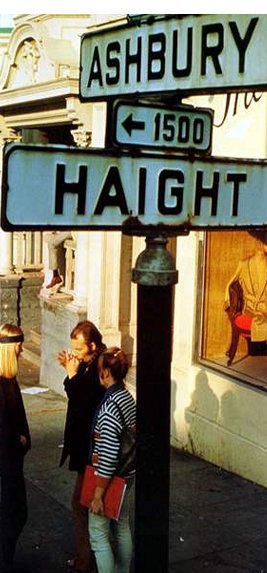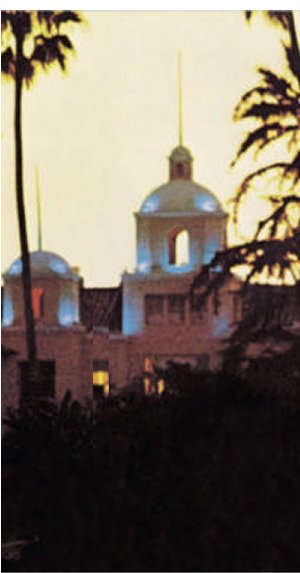Southern California¡¦s
Revolution Daniel Huang
Joseph. S.
O¡¦Flaherty has been an executive of several high technology companies during
the mid-late nineteenth century in the United States. O¡¦Flaherty also founded
and served as the chairman of several companies including the Continental
Device Corporation, Matrix Science, and Semtech.
He was also the former mayor of Rolling Hills, California. His interest in Californian history stems from his graduate studies
at Stanford.
Joseph S. O¡¦Flaherty¡¦s historical review,
Those Powerful Years, The South
Coast and Los
Angeles, 1887-1917, investigates the
history of Los Angeles and southern
California along with its
applauded heroes, masterminds, and achievements and its robber barons, lucky
business tycoons, and dreadful failures. Although disasters and scheming rogues
plagued California, the onset of revolutionary irrigation techniques,
transportation systems, and ¡§an explosive chain reaction of new inventions and
social concepts¡¨ placed Californians in a place famed to be the paradise of the
world.1 The exploration of California¡¦s developing years begins with
the introduction of the sparse population of California that included the Californios and the sudden influx of railroads and
immigrants that gave way to a quickly changing society ¡V a new California
filled with industrial powerhouses. It expands to touch upon the effects of the
1949 California Gold Rush, the floods and droughts, the growth of railroads,
trolleys, and automobiles, and the boom of real estate in the 1880s that was
quickly followed by the depression of the 1890s. Abruptly, the book closes with
a series of events that shook not only California,
but the United States
and the world ¡V including transcontinental railroads, the creation of a
powerful navy, destructive earthquakes resulting in pandemic anxiety, and
finally, the explosive times of World War I.
O¡¦Flaherty¡¦s opening chapters converse about the major reason for people¡¦s sudden
invasion into the highly coveted lands of California
(during the latter part of the nineteenth century). This provided for the land
boom of the 1880s. Recently completed railroad tracks provided
incoming crowds with both well to do transportation while other provide
services and food that were hardly sufficient for the journey. With great
insight, O¡¦Flaherty incorporates many aspects of the each time period he briefs
upon including stories of single persons, the dry and desert weathers of
California that so many New Englanders and Southerners were unaccustomed to,
guidebooks that provided methods to understand the Californian culture and
engross its readers with tips to stay healthy and be void of problems including
constipation, and even scandals of robber barons including the notorious ¡§Lucky
Baldwin,¡¨ who foreclosed the San Gabriel Valley and single handedly brought
down the successful Temple & Workman Bank. ¡§To call it a craze or a bubble
is the veriest nonsense,¡¨ one of the quirky phrases
that composes each chapter title, provides sideline commentary for each chapter
and in this case, Joseph O¡¦Flaherty discloses, with great amounts of
consideration and studies, that the boom of the 1880s in California created a
sort of uncertainty while immersing the state into a bliss of fortune seeking.2
Speculators didn¡¦t even visit the vast lands that they blindly purchased and
business was shaken by the intense excitement of true stories of people that
became multimillionaires after just a couple months and a score of luck.
Quite suddenly, O¡¦Flaherty goes
from a step by step investigation of the late nineteenth century that followed
chronologically to a speculation of various issues that swarmed the society of Los
Angeles and southern California.
Unaware of the revolution that had changed California¡¦s
social order, newcomers unknowingly disregarded the past heritage of California
and the rancheros that dominated California¡¦s
economy. However, the culture proved to thrive in specific areas partly due to
events held by old timers including massive Fourth of July celebrations that
attracted thousands from surrounding areas. Further scrutiny of the social
classes by O¡¦Flaherty reveals the racial clash that surrounded competition in
the work place. Because thousands of Chinese immigrants had arrived during the
Gold Rush and during several peaks of railroad construction, the competition
for manual labor spiked up and caused great turbulence and racial tensions.
With a number of about fourteen thousand Chinese railroad workers present at
the very apex of railroad construction, not only Californians dually hated and
feared the mass immigration of the Chinese and other Asians and southern and
eastern Europeans, but also the United States. This resulted in several laws
hampering the immigration of vast amounts of foreigners and violence mounted
the Chinese people within California.
The Chinese faced widespread discrimination and harassment; several Chinese
massacres took place that took the toll of hundreds of deaths. Insightfully,
O¡¦Flaherty explains that the Chinese opium dens and their infamous slave girl
trade shed a rather negative light upon the Chinese culture. These Chinese
people also arrived in America
with an intent to travel back to China
after they had made a few hundred of dollars in profit, but after the great San
Francisco earthquake in 1906 and the rise of Sun Yat-sen in China
in 1913, the Chinese began to integrate themselves into the American culture.
The emergence of high moralities
gave way to the idea that ¡§intemperance and impurity are iniquity¡¦s Siamese
twins¡¨.3 With over 100 saloons in Los Angeles in operation shortly
after the Civil War, the temperance movement, starting with the religious group
named the Quakers, developed into a nationwide movement. Temperance advocates,
known as the ¡§Drys,¡¨ proposed that prohibition laws
were neither desirable nor necessary since they believed that people had enough
willpower to fight off alcohol abuse without governmental intervention.
However, alcoholism and society¡¦s immorality infected the wealthy to a great
extent and the Drys realized that laws would have to
be implemented
Contributing to the spirit of
different problems that swarmed California
and the corrupt wealthy, O¡¦Flaherty begins the second half of his book with
economic and business issues. With issues creating ruckuses even in Congress,
the Senate, and the House of Representatives including issues of federal
spending for improvements in California, a commentator announced that ¡§the
people of your district are a set of idiots¡¨.4 The common man that
didn¡¦t stand for their beliefs and those of aristocracy that did little to help
the public composed this ¡§set of idiots.¡¨ The book emphasizes the powerful hold
that the wealthy, including one of the greatest robber barons of the West
Coast, Collis P. Huntington, who controlled the Southern Pacific, a huge
corporation that oversaw the running of thousands of miles of railroad tracks.
People feared Collis P. Huntington because of his ability to grip and sway the
decisions of companies through his influential position and his capacity to control
mass transportation. Even Stephen M. White¡¦s accomplishment of obtaining a
$3,090,000 appropriation for the South
Coast and improvements was
tarnished because Huntington came
into command of those improved areas due to his power over the transportation
leading in and out of these areas. Because of the severe problems and hatred
that stemmed from Huntington¡¦s
oversight of the Southern Pacific, when the Pacific Cable Company emerged,
people offered ¡§abundant prosperity to [it]¡¨.5 The
rise of this company provided very cheap and efficient means of transportation
to the public. This caused the rise of many competing companies in the cable
car business. Cable lines were spread throughout Los
Angeles and San Diego
and were offered before 6 A.M. and
even after 10 P.M. The major setback
of these cable lines came from the high costs of creating a cable car system,
but was balanced with the extremely low operating costs. Because many people
turned away from the use of railroads, the competition of the cable car lines,
creating cheap fees for transit, proved successful against the monopolistic
railroads of Southern Pacific and Sante Fe.
O¡¦Flaherty ends his book with an
onset of new social ideas and astounding technological advancements of the era.
Although social problems continued to afflict southern California,
such as terrible public schools that required security guards for teachers¡¦
protection and students that scored poorly on their exams, previously tapped
technologies were reformed and better understood. The transfigured
technological advances emerged to be so ground breaking that they sprouted
numerous opportunities for riches and ¡§these opportunities may honestly be
called glorious¡¨.6 New irrigation techniques, developed by George Chaffey, allowed for inhabitation of otherwise barren and
dry, desolate lands in the western frontiers. As usual, O¡¦Flaherty presents
problematic sides of otherwise successful accomplishments. The irrigation of
George Chaffey prompted others to plan out their own
irrigation projects. Some dams built for irrigation merely flooded surrounding
areas while other projects including William Molholland¡¦s
proposed aqueduct infuriated farmers, whose water supplies were being taken.
Companies like the Union Oil started digging for oil and some vast oil wells
were discovered including the gigantic well in Lake
View. Benjamin F. Silliman started an ongoing process of researching the uses
of refined oils and much experimentation for using petroleum for fuel was going
on. Although bicycles became a large market in southern California,
the refined oils were beginning to be expended by automobiles. The first
automobiles were so clunky and noisy that even Woodrow Wilson publicly
criticized them, however, the Silver Ghost, developed by Rolls Royce, was
exceedingly reliable and quiet. The Model T by Ford also provided a reliable
car that was very cheap and effectively engineered. The car was, in fact, so
affordable that the general public could invest in cars and the government
began to pave roads. Charlie Chaplin and Mary Pickford,
on the opposite end of the spectrum, practically started the star system in the
newly developed movie industry of Hollywood.
Greater popularity of sports, including boxing, paired the sprouting industry
of movies. O¡¦Flaherty ends his historical appraisal with a broadening scope
including the Los Angeles Times bombing of 1910 that shook the entire nation
while setting back decades of labor union progress. He finishes while briefly
noting on the 1898 war with Spain,
the construction of the Panama Canal, the Great White
Fleet, the San Francisco Earthquake, and World War I.
A basic overview of the book is
readily seen in O¡¦Flaherty¡¦s foreword, which focuses on the expanding
population, industrial development, and social change in California.
He expresses the notion that the few decades preceding and following the turn
of the twentieth century played out with explosive changes during which ¡§one
seven-league step the nation had moved from a muddy morass of impassible trails
to a vast network of different roads that ¡§effectively bound together¡¨ the
whole country.1 Because
California seemed to experience the greatest effects of these road and railroad
networks in its economy and society, O¡¦Flaherty emphasizes that ¡§occasionally a
generation seems twice blessed;¡¨ oil, steam, and electricity began to provide
the energy to the nation and allowed for greater accomplishments; disease had
become more significantly under control due to the spread of understanding of
germs; social problems including slums, prostitution, and drunkenness, although
not fully healed, had been brought down to a tolerable low.1
O¡¦Flaherty weighs the various natural disasters, prominent robber barons, and
project failures of the times against all the accomplishments and has produced
a book that acknowledges the design that California, representing the entire
nation, has experienced far more good than bad. Because of this it was evident
to the general public in the United States
¡§that their glass of life was half-full and far indeed from being half empty¡¨.1
An unbiased view of history
accompanied by several aspects of each time period within a specific
geographical location is one of the keys to good history; this is one of the
keys that Joseph S. O¡¦Flaherty partially lacks. As a New Leftist, O¡¦Flaherty
successfully explains why certain areas of southern California
experienced much violence and racism. He also gives insightful commentary about
people that were considered robber barons and captains of industry revealing
even the good sides of the robber barons and the downfalls of the captains of
industry. Unfortunately, because of his graduate study at Stanford
University and his devotion to the
history of California, O¡¦Flaherty
tends to exemplify and emphasize the major successes over the catastrophic
errors that, in some cases, took the excise of millions of dollars and hundreds
of lives. He also leans towards the impression that California
seems to embody the United States
as a whole, including New England, the South, and all of the West, even though California
did not, in fact, represent much of the social progress and tension within
these other areas of the United States.
Although this may be arguable, he even goes as far to say that ¡§the best place
to be was southern California and
Los Angeles¡¨ due to its coveted
weather and quick development of cities and towns.1
O¡¦Flaherty¡¦s compilation
encompasses much of the excitement and events that stirred within Californians
during the late nineteenth century and the early twentieth century. A professor
of History, John E. Baur, from the California
State University
system, states that as a scholarly writer who thoroughly understands the
various views of each event, ¡§O¡¦Flaherty is skillful in presenting backgrounds
for each enterprise.¡¨9 This includes the craze for real estate, California¡¦s
banking system, the revolutionary irrigation development and California¡¦s
agriculture and water systems, the area¡¦s efficient and rapid transit, as well
as the environment, oil and petroleum extraction. He pervades onto the opposite
side and covers harassment of ethnic minorities and problems that were similar
to those that plagued Vernon,
nicknamed ¡§sin city¡¨ for its pandemic turmoil. Baur,
however, identifies a major flaw of O¡¦Flaherty¡¦s use of quotations for
dramatization and imagery. Baur believes that ¡§it
would have been wiser to have identified fully some of the major informants
quoted, surely unfamiliar to general readers.¡¨10 Another review from
the New York: Exposition Press
identifies with Baur¡¦s contemplation that O¡¦Flaherty
has presented most of the major events of the era in southern California.
However, it goes on to state that ¡§O¡¦Flaherty¡¦s volume presents little factual
information not covered¡¨ by books published by other authors.11 It suggests
that O¡¦Flaherty merely compiled already known information into another book and
¡§his volume¡¦s rather loose structure may occasionally puzzle the nonexpert reader¡Xthe book¡¦s potential user.¡¨12
Very comprehensive in its
explanations and information, this book provides the reader with very clear
facts while including dialogue and other eccentricities like poems and pictures
that add to the depth of the assemblage. However, the imperfections of this
piece are quickly seen due to its faulty organization. O¡¦Flaherty incorporated
witty phrases and often delegates sections of his book to certain recorded
conversations, but fails to elucidate the meaning behind this; this includes
the incorporation of chapter titles such as ¡§I¡¦ll have the damned thing taken out¡¨
without explaining to the common reader what this title seems to be about.7
The book moves almost like a novel as it depicts the story of California and
prominent figures that rose to the top during the time. Because the book
doesn¡¦t move chronologically the whole way, it allows O¡¦Flaherty to describe
the development of each business or environmental aspect of California;
this also gives way to confusion of the relationship between the times of
events and is further marred by the lack of geographical explanation of the
locations of cities, towns, and major affairs.
O¡¦Flaherty, although he claims that
¡§Southern California was a microcosm of the rest of the country,¡¨ details very
little about other regions of the United States.8 However, he does
make some points clear: people flocked into California from the time of the
Mexican War and the Gold Rush and finally through the real estate boom of the
1880s and the prosperity that seemed to be promised to California. California
also seemed to be the source of the movie culture of America
as Al Christie decided to start up his movie industry in Hollywood,
California instead of in Florida.
The Los Angeles Times building was bombed in 1910 and it foresaw a setback of
the progress of labor unions throughout the country. People were outraged and
in California, labor unions would
have to fight for another generation to get back the protection and legislation
they had recently achieved. On the other hand, society in California
was also drastically different from the rest of the country. The high rate of
Chinese immigrants was followed by violence and hatred against these Chinese
immigrants; there were much more Chinese dwelling in California
than any other state at that time. The weather was also more temperate and mild
in some areas and much more arid and dry in others, which called for vast and
clever irrigation systems.
Because every state in the United
States connects, whether geographically, socially, or economically, to every
other state, their major events and new ideas are passed on to the rest of the
nation. O¡¦Flaherty also notes that Californians had changed the very meaning of
¡¥manifest destiny¡¦; instead of ¡§merely some jingo rationalization for taking
over the remote islands of the Philippines halfway around the world,¡¨
Californians sought to expand their influence by modernizing technology and
societal impressions that would affect the United States and even the whole
world.1 California played important roles from advancing
transportation to the training of army recruits from throughout the West Coast
during World War I.
Those
Powerful Years: The South
Coast and Los
Angeles, 1887-1917, demystifies the sudden
detonation of California¡¦s
economy, government, and society. With successful steps in the understanding of
disease, transportation, oil, water systems, and the curing of society¡¦s
problems, California and its desirable land and climate proved that, in
California, ¡§it was a grand time to live¡¨.1
1. O'Flaherty, Joseph S.. Those Powerful Years:
The South Coast and Los Angeles, 1887-1917.. Hicksville, N.Y.: Exposition Press, 1978. 11.
2. O¡¦Flaherty, Joseph S. 28.
3. O¡¦Flaherty, Joseph S. 83.
4. O¡¦Flaherty, Joseph S. 122.
5. O¡¦Flaherty, Joseph S. 135.
6. O¡¦Flaherty, Joseph S. 211.
7. O¡¦Flaherty, Joseph S. 195.
8. O¡¦Flaherty, Joseph S. 313.
9. Baur,
John E. "Those Powerful Years: The South Coast and Los Angeles, 1887-1917." Volume 25,
Number 3, Summer 1979. 31 May 2008.
<http://www.sandiegohistory.org/journal/79summer/br-powerful.htm>.
10. Baur,
John E
11. The American Historical Review, "Those
Powerful Years: The South Coast and Los Angeles, 1887-1917." JSTOR
Vo. 78, No. 2 (April 1979): 492.
12. The American Historical Review





















